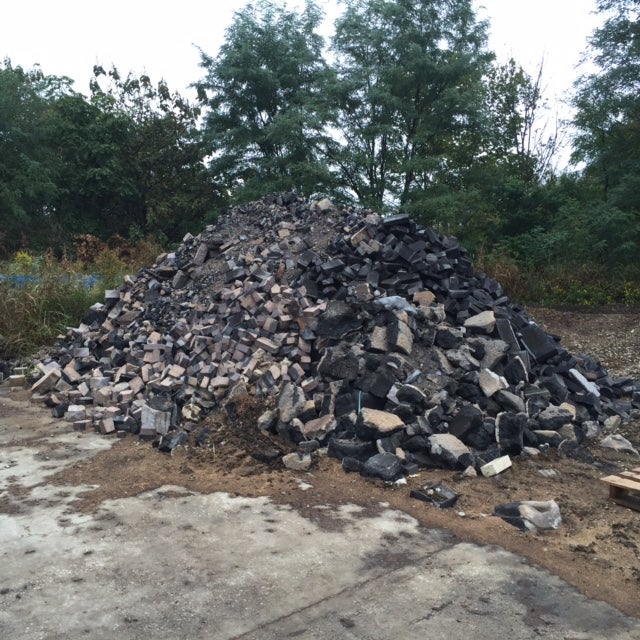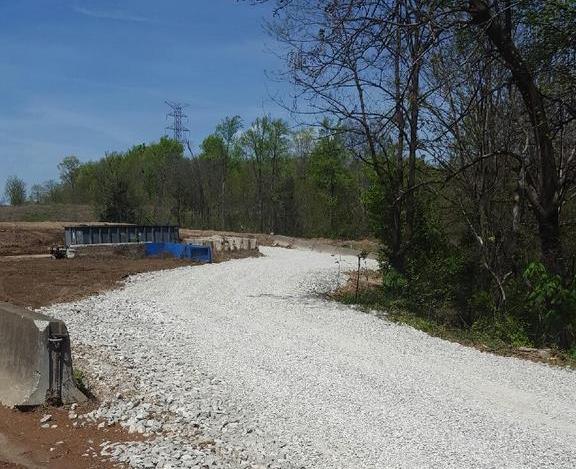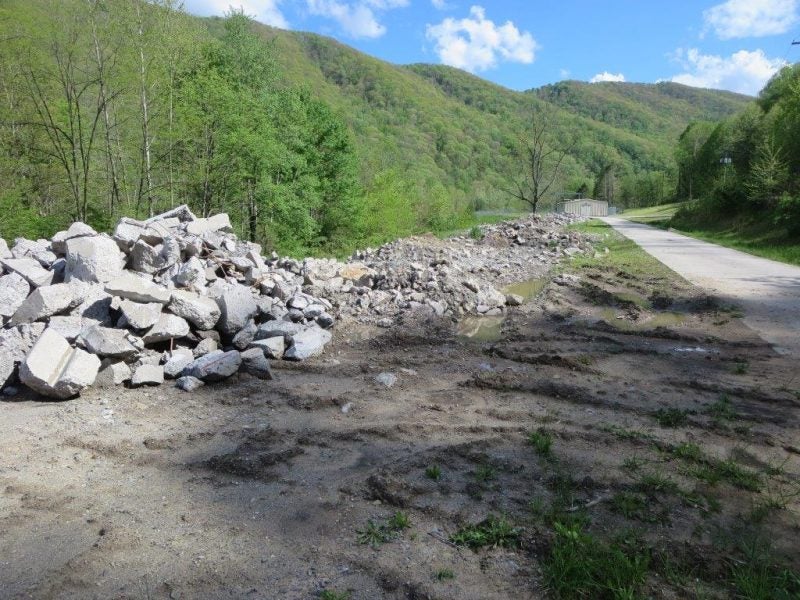Paving the Way to Reduced Waste
By Steve Clarke
Clorox is committed to reducing the volume of waste we send to landfill by 20 percent by 2020.
This is just one of the public sustainability goals and commitments embedded into our 2020 Strategy.
As a result, we’re constantly looking for innovative ways to reduce or reuse our waste. One challenge we face is finding local ways to reuse hard-to-recycle waste items, particularly at our Kingsford® plants, which tend to be located in rural areas.

Brick and debris stockpiled at the Kingsford plant in Summer Shade, Kentucky.
Brick reuse at Kingsford Summer Shade
Brick and concrete debris is one of the most problematic waste streams at our Kingsford plants.
Drying ovens and combustion chambers are lined with specialized brick, which needs to be replaced every 15 to 20 years.
“Each demolition project can generate several tons of waste, and we’d really like stop sending this material to landfill,” said Bobby Wheeler, Summer Shade plant manager.
So a team looked into Kentucky’s Department of Environmental Protection (DEP) Beneficial Reuse program for some of the plant’s brick debris.
First, Summer Shade employees identified a legitimate use for the brick — as a base for a gravel access road in the back of the property. The existing dirt road created dust during the dry summer, and storm runoff was muddy during wet winter months. A gravel road solved an environmental issue while reusing the old brick.
Then the plant had to demonstrate that paving the road wouldn’t harm human health or the environment. Within two months, the plant had approval to proceed with the road.
The project itself took just a few days to complete.

Brick was used for the road base and covered with gravel.
Concrete and asphalt reuse at Kingsford Parsons
The Kingsford plant in Parsons, West Virginia, had a different problem, though one also dealing with concrete debris.
It turns out the plant regularly has to replace sections of its concrete roads.
“We have a lot of rough winters in West Virginia. Plant truck traffic coupled with heavy salt usage deteriorates concrete fast,” noted Carey Preston, plant manager. “As a result, we generate a lot of debris with each section we replace.”
Earlier this year, a local official asked the plant if it had any debris for use on a state highway transportation project called Corridor H.
As it happened, the Parsons plant had several loads of concrete stored on site, ready for just this type of project.
While West Virginia doesn’t have a formal beneficial reuse program like Kentucky’s, it does allow reuse of clean, inert concrete and brick for fill or road base. After this first successful reuse of plant debris, we’re looking to identify other, similar kinds of debris that could also be used for the Corridor H project or others like it.

Concrete debris at the Kingsford plant in Parsons, West Virginia, prior to sending it for use as fill.
Beneficial reuse at other plants
These two beneficial reuse projects are now models for other Kingsford plants that generate similar construction debris.
We’re researching which other states have similar non-landfill solutions for brick and concrete. Projects like these are wins for our plants and for the environment.




